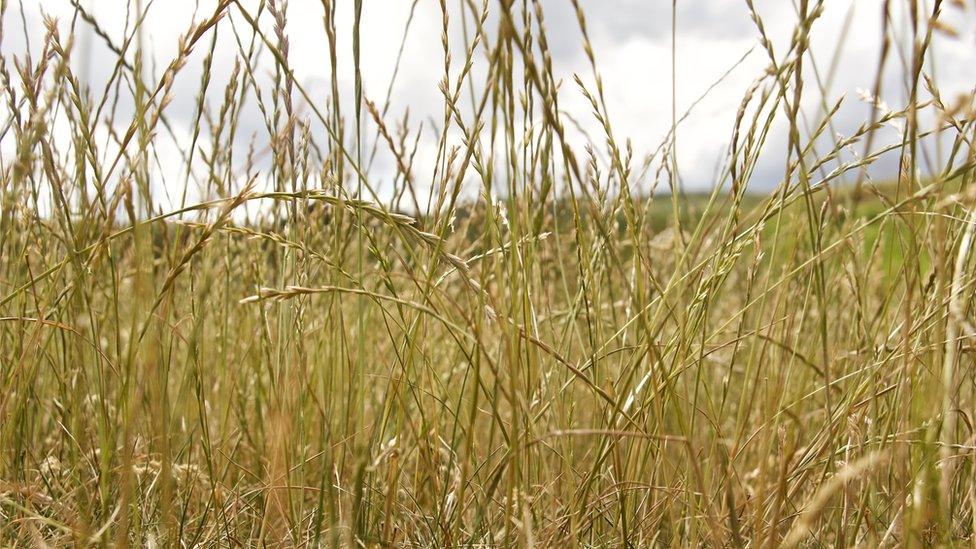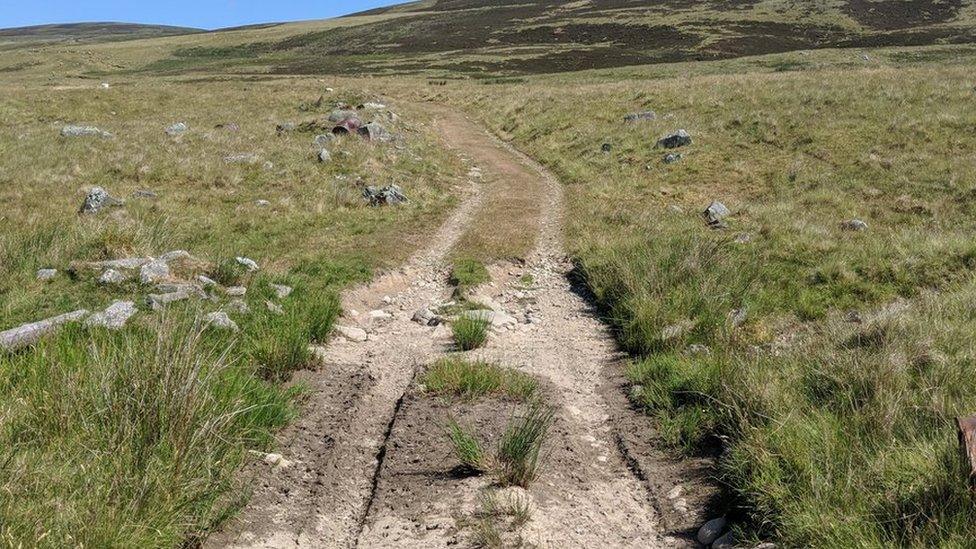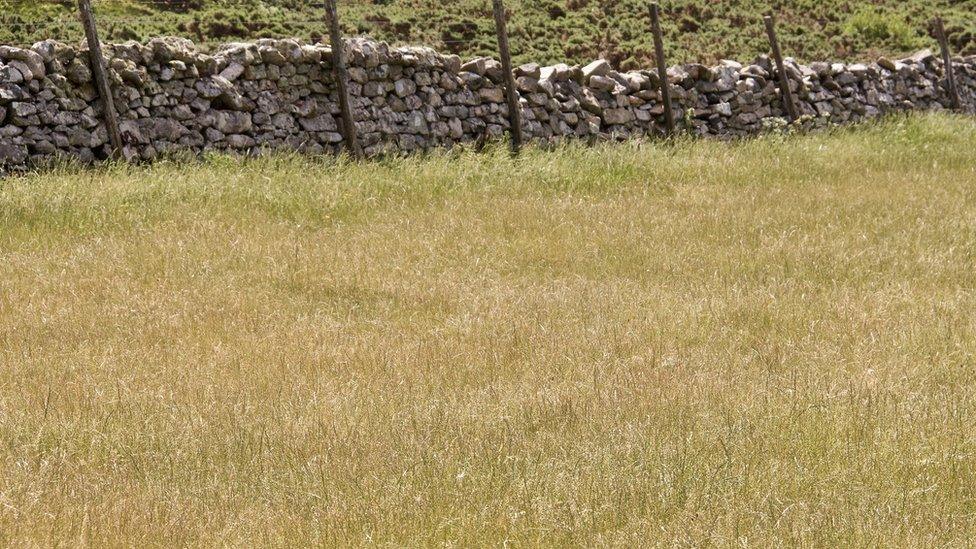Farmers warn of crisis amid 'drought'
- Published

Joyce Campbell said there should be around two to three feet of grass growth at this time year - rather than just a few inches.
Farmers have warned of an impending crisis amid drought conditions in parts of Scotland.
They said land had been "scorched" during the heatwave, leaving some struggling to feed livestock.
After several weeks without significant rainfall, the lack of grass has also left some unable to make enough silage to see them through the winter.
That has led to reports of farmers selling cattle so that they have fewer mouths to feed.
Not all farmers are suffering during the heatwave however - with many soft fruit farms celebrating a bumper harvest.
NFU Scotland said early reports suggest there had been a harvest of "exceptional quality", with the warm weather fuelling increasing demand.
But Bruce McConachie, from the Spey Valley, told the BBC Scotland news website that he was facing difficulties providing animals with water after his usual supplies dried up.

Bruce McConachie said he has never seen this ford with less than six inches (15cm) of water in it.
The beef and sheep farmer said he has "no choice" but to pump water from the nearby River Spey into specially purchased tanks.
He said that he was spending 90% his day ferrying it to his livestock - time that should have been spent on other essential farm work.
'Last option'
The first cut of silage was collected early because the grass was not growing, and it was down to about a third of what they normally collect, he added.
And a shortage of grazing means he is seriously considering feeding silage, which is normally stored for winter, to his livestock.
"A lot of people are starting to sell cattle to combat the effects of the drought so there are fewer mouths to feed," he said.
"We are not at that stage yet. But it's something we are considering as a last option."
He added: "It's a national problem. We are by no means the worst, but it's become a crisis now."
Allow X content?
This article contains content provided by X. We ask for your permission before anything is loaded, as they may be using cookies and other technologies. You may want to read X’s cookie policy, external and privacy policy, external before accepting. To view this content choose ‘accept and continue’.
Sheep farmer Joyce Campbell, from Sutherland, said it was the driest summer she could remember - and it was shaping up to be the "perfect storm".
"I can just about remember 1976 and I've never seen anything like this," she said. "Parts that should be lush and green are brown and burned."
'Shearing late'
This year's heatwave follows a harsh winter during which Ms Campbell had to buy in extra fodder.
She said it already looked like she would be short again this winter.
Her animals are also suffering in the heat so she has had to adapt her work practices to ensure they are comfortable.
"Last week we were shearing late in the evening or early morning," she said.
But she added: "We have to roll with the punches. It's just nature, we have to deal with it."

Joyce Campbell said this silage field should be getting cut but it is brown and burned rather than lush and green.
Gary Mitchell, a dairy farmer from near Stranraer, told BBC Radio Scotland that he was reluctant to complain about the sunny summer - but it was causing problems.
He said he cuts fresh grass every day to feed to his cows but they only have two days' worth left.
'Quality of forage'
"So we'll be going into a full winter ration feed as of Friday which wasn't planned for because generally we cut grass right through until November but that grass is disappearing," he added.
Mr Mitchell, who is also the vice president of NFU Scotland, said it was proving difficult for farmers to plan ahead.
"How much forage am I going to need? Because forage stocks are at all time low because of the winter we have just left.
"Plus the quality of forage last year wasn't very good so it is quite a problem at the minute, trying to gauge when the rain's coming."
NFU president Andrew McCornick said the dry weather had enabled a lot of farmers to cut hay and silage and graze livestock outdoors after a "dreadful" 12 months.

Bruce McConachie has had to purchase a special pump to retrieve water from the River Spey to feed his livestock
But he admitted a "spot of rain" would now be welcome.
"A little bit of moisture would be a great help to grass growth and for those who are relying on a second cut of silage, as well as our arable members who will be looking for some wet weather to swell grain as we quickly approach harvest time," he added.
"Straw supplies look like they may become an issue later on in the year and we are encouraging those who will need straw to negotiate a reasonable price sooner rather than later. With a bit communication, both livestock and arable farmers should see a positive outcome.
"This is a critical time for farmers and crofters, as a lot of livestock members will need to plan how they use their grass very carefully over the coming months. Some will need to sacrifice silage for grazing, and vice versa. Some will also be considering the cost benefit of sending sheep and cattle out for wintering."
It came as Scots were urged to "use water wisely" as the soaring temperatures led to a surge in demand.
Scottish Water said there had been a 30% rise in demand for water - the highest experienced since the utility was formed in 2002.